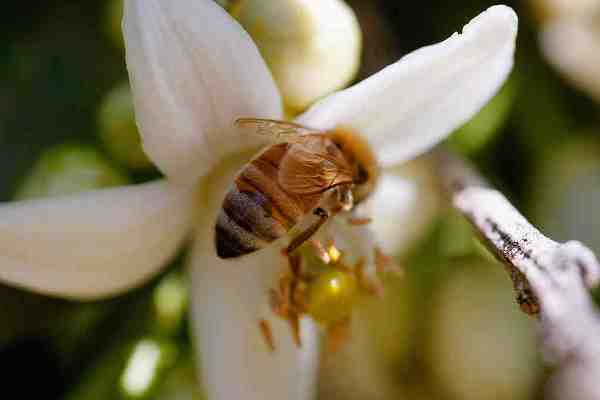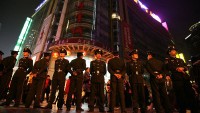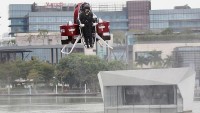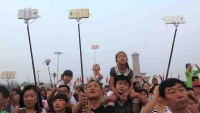University Researchers try out new Tech That Allows Drones to Perch Like a Bee
| Julio Cachila | | May 20, 2016 05:21 PM EDT |
(Photo : David Silverman/Getty Images) A team of Harvard researchers have created a perching drone inspired by the bee's ability to land and perch on different surfaces.
Spies and other intelligence services would love to get a hold of this: researchers from a renowned university are currently experimenting a way to help drones conserve energy on important flights – by making them stick to surfaces the way a bee does.
The robot bee is a project conducted by researchers from Harvard University. It is inspired by how bees and other insects land on surfaces and jump off to take flight, according to Mashable. With this technology, researchers believe that a drone can save a substantial amount of battery energy that it uses while merely hovering mid-air.
Like Us on Facebook
The research, published Thursday in the journal Science, showed that a drone will be able to save energy if it perches on some surface instead of maintaining flight. This can be done by using some material that would help the robot attach itself to a ceiling.
However, although there are a variety of options when it comes to that, chemical adhesives will prove to be problematic in the sense that it will hinder the lightweight robot from quickly taking off, the researchers said in a press release.
Considering this, lead researcher Moritz Alexander Graule and his colleagues scrapped that idea and instead used an electrostatic landing patch composed of a carbon-fiber base, copper electrodes, and a polyamide coating.
The patch is attached to the top of a drone the researchers made. The drone, a micro aerial vehicle (MAV) inspired by a bee, can stick itself to almost any surface including glass, wood and even real leaves using static electricity.
When charged, the patch produces static electricity that allows it to perch. It contains foam to help cushion the drone’s landing, and prevent it from merely bouncing off the ceiling as it attempts to land.
This new technology could prove useful in many situations, according to study co-author Robert Wood.
The drone can be used in“basically any situation where you want to have low cost and distributed sensing [that] would be too difficult or too dangerous for a human," Wood said.
The technology is still under development.
Tagsdrones, unmanned aerial vehicle, micro aerial vehicle, MAV, static electricity, Bees
©2015 Chinatopix All rights reserved. Do not reproduce without permission
EDITOR'S PICKS
-

Did the Trump administration just announce plans for a trade war with ‘hostile’ China and Russia?
-

US Senate passes Taiwan travel bill slammed by China
-

As Yan Sihong’s family grieves, here are other Chinese students who went missing abroad. Some have never been found
-

Beijing blasts Western critics who ‘smear China’ with the term sharp power
-

China Envoy Seeks to Defuse Tensions With U.S. as a Trade War Brews
-

Singapore's Deputy PM Provides Bitcoin Vote of Confidence Amid China's Blanket Bans
-

China warns investors over risks in overseas virtual currency trading
-

Chinese government most trustworthy: survey
-

Kashima Antlers On Course For Back-To-Back Titles
MOST POPULAR
LATEST NEWS
Zhou Yongkang: China's Former Security Chief Sentenced to Life in Prison

China's former Chief of the Ministry of Public Security, Zhou Yongkang, has been given a life sentence after he was found guilty of abusing his office, bribery and deliberately ... Full Article
TRENDING STORY

China Pork Prices Expected to Stabilize As The Supplies Recover

Elephone P9000 Smartphone is now on Sale on Amazon India

There's a Big Chance Cliffhangers Won't Still Be Resolved When Grey's Anatomy Season 13 Returns

Supreme Court Ruled on Samsung vs Apple Dispute for Patent Infringement

Microsoft Surface Pro 5 Rumors and Release Date: What is the Latest?













